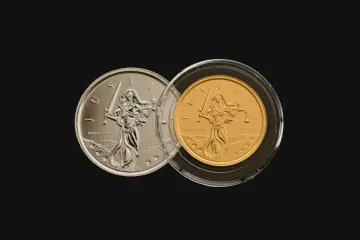Volatility is a major concern for those who regard cryptocurrencies as a currency rather than an investment. Those who don’t want to take risks use stablecoins with a pegged value.
Contents
What are Stablecoins
Stablecoins are pegged to a fiat currency or a physical property. In theory, a stablecoin can be bought or sold at any time at a fixed price. They are basically cryptocurrencies with a fixed exchange rate, constituting a universal unit of exchange, convenient for trading, storing as well as safeguarding investments from cryptocurrency volatility.
Why they are so important
Stablecoins are known for their liquidity. The stability & effectiveness inspire credibility in the virtual currency market, so more and more people would be willing to engage in it. Popular stablecoins represent liquid assets: they are available in large quantities on almost any platform and make themselves useful as universal units of exchange as well as storage among crypto investors.
What Stablecoins are backed by
Stablecoins imitate the attributes of traditional currencies, so they ensure greater stability than other cryptocurrencies, putting a peg to the dollar or euro (usually at 1 to 1), precious metals, and other assets, including cryptocurrencies.
Stablecoins with fiat backing
By spending money, you acquire stablecoins. Later exchange it for your initial real money. In contrast to other digital assets, which tend to be volatile, stablecoins supported by fiat currency tend to exhibit minimal volatility.
Among such stablecoins are USD Coin (USDC) and Tether (USDT), which are widespread and backed by the dollar, but if you compare usdt vs usdc they represent different degrees of usefulness. USDT is the most traded cryptocurrency with the highest 24-hour trading volume, while USDC is a safer repository of funds because it is audited annually.
Stablecoins backed by cryptocurrency
Since a backing cryptocurrency may be unstable, stable crypto-secured coins have excess collateral to guarantee the stablecoin price. A $1 stablecoin may be pegged to a crypto coin worth $2, meaning if this crypto coin suffers a price drop, the stablecoin is loaded with a hidden safeguard that could still cost $1.
Algorithmic Stablecoins
They lack security and use a machine algorithm to keep the cost usually at 1$ from changing dramatically. If their worth rises, the machine is going to immediately release higher numbers of tokens to reduce the coin’s price, and vice versa to raise the cost level. If in addition to Stablecoin you want to buy Bitcoin https://trends.aax.com/buy-sell-bitcoin , you can do on the AAX exchange.
Popular Stablecoins
Tether (USDT)
The leader among fiat cryptocurrencies, the Tether token is backed by reserves of fiat money held in the accounts of Tether Limited. It is equipped with deep trading pools, volatility protection, transaction transparency, and low fees. Tether Limited emits an equivalent amount of USDT when it receives funds, then destroys the corresponding tokens when requested to redeem them. They claim to be constantly observing the resources in their vaults along with the quantities of USDTs emitted.
USD Coin (USDC)
The 2nd most capitalized asset after USDT, bound to the USD. One coin equals $1 with a minimal deflection from the goal value. Debt securities and cash reserves of regulated financial entities represent collateral for the coin. CENTRE, a consortium of two big, well-regulated financial establishments that uphold a high standard of operation – Coinbase and Circle, acts as an emitting party. They have managed to create a clear financial statements system to account for USDC reserves, providing a basis for trustworthiness as well as credibility.
Binance USD (BUSD)
BUSD is a stable currency covered by USD in a 1:1 proportion. It is emitted by Binance exchange in cooperation with Paxos. Every month, auditors’ reviews of the BUSD are posted on its official site. Transfers with Binance USD are available at low fees, which is especially important in foreign transactions. BUSD is utilized for collateral, margin positions, and lending as well as for the safekeeping of savings.
DAI
Dai (DAI) represents a decentralized stable currency based on Ethereum, which is committed to holding a value of $1. Dai is not backed by U.S. dollars in a bank account. Instead, it utilizes collateral via the Maker platform. Users create Dai coins in the Eth blockchain. A smart contract is then created in the MakerDAO platform, which converts contributed Ethereum into PETH (Pooled ETH). After PETH is frozen, the user issues altcoins. They are used either for conversion to other cryptocurrencies or for purchases at stores that accept virtual money.
TerraUSD (UST)
UST is an algorithmic decentralized stablecoin. The mechanism necessitates burning LUNA to create UST. The developers of Terra have created something similar to an automated central bank, utilizing special algorithms to adjust the offer. The collateral is the Luna coin.
TerraUSD advantages:
- Offers high scalability for DeFi protocols;
- Accurate interest rates;
- Provides the ability to work across multiple networks;
- Easy to integrate into different cryptocurrencies;
Other stablecoins
TrueUSD
TrueUSD is a stable Ethereum-powered currency. TUSD is backed by US dollars, which are held by banks in escrow. It is tradable on more than 70 exchanges. Its main goal is the growth and sustainability of liquidity in the crypto market. TrueUSD cryptocurrency may be used in multiple areas:
- Trading and investing;
- P2P exchange;
- International trading;
- Repository for funds.
Inspections are carried out regularly, making it more attractive to large investors. In addition, the TUSD network offers low transaction fees.






